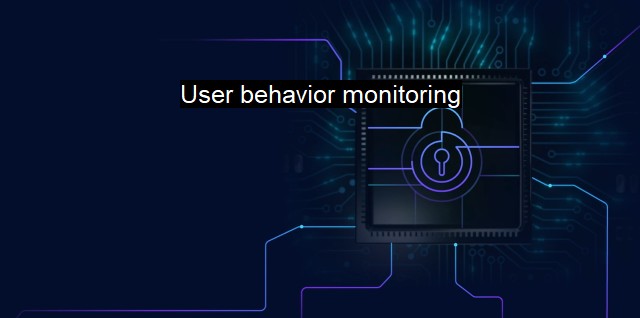What is User behavior monitoring?
Understanding User Behavior Monitoring for Effective Cybersecurity: Analysis, Measurement, and Preemptive Strategies
User behavior Monitoring is an essential strategy that advanced technology organizations employ to better understand how end-users interact with several tech systems and applications. Defined precisely, user behavior monitoring refers to the practice of using software tools to track, collect, and evaluate a user's actions – and in some cases, behaviors – on their devices.The technology performs this task by profiling standard user behavior over a certain period of time. By learning what normal activity appears as, it can identify abnormal conduct, which could effectively indicate the presence of cyber threats like malware or an ongoing data breach. The objective of monitoring user behaviors revolves around spotting unusual user activities that could offer early warnings about inside or outside cyber threats. In a rapidly digital economy that is now more connected than ever, user behavior monitoring has consequently found itself thrust into the spotlight due to urgent cybersecurity concerns.
Primarily, user behavior monitoring tracks activities that could reveal malware or exploitation of system vulnerabilities. These monitored activities could typically include inappropriate content access, sharing enormous amounts of data externally, and files accessing outside regular hours. It could also include logging in outside of standard times or from unexpected locations, offering administrators with necessary visibility into the activities happening within their network. Such visibility allows for a quicker response when there's any deviation from the norm, reducing the time it takes to discover and remediate cybersecurity threats significantly.
In addition to detecting potential data breaches early in the process, user behavior monitoring can also help show which users possess more access privileges than they need – strengthening a vital cybersecurity principle known as the 'Principle of Least Privilege' (PoLP). By adhering to PoLP and ensuring that users only have access that is necessary for their role, the risk of insider threats is reduced considerably. It can also reduce the 'attack surface' that outside adversaries can exploit, drastically improving an organization's ability to safeguard sensitive data.
Most Antivirus software also has a user behavior monitoring feature embedded into them. For instance, they may detect if an application attempts to modify a critical system file suddenly. It would then flag it as a suspicious activity, alert the user and can even block that application to guarantee the system's integrity is not compromised. Premium antivirus solutions also provide behavior-based detection capabilities as an integral part of endpoint protection strategies. They act as a critical defense layer by providing alerts when any software or user's behavior starts straying from a known safe or regular pattern of activity.
That said, it’s important to note that while user behavior monitoring is incredibly beneficial it also ties into several privacy concerns. Organizations must ensure that their user behavior monitoring policies and strategies are in absolute compliance with relevant laws and regulations. It's worth highlighting that user behavior monitoring should never develop into invasive "employee spying."
As organizations continue to evolve digitally and interconnectivity across various systems and platforms increases, cybersecurity problems are bound to occur. User behavior monitoring is a significant way to deal with these pressing security issues. Not only can it help detect potential threats in a more proactive way, but it can also lead to considerable operational security cost savings. A robust approach to user behavior monitoring helps organizations strike a balance between security, compliance, and privacy – a balance that will continue to be crucial as we advance into the more digitally connected future.

User behavior monitoring FAQs
What is user behavior monitoring in cybersecurity and antivirus?
User behavior monitoring refers to the process of tracking and analyzing the actions and patterns of users on a system or network in order to detect suspicious activity that may indicate a security threat.Why is user behavior monitoring important in cybersecurity and antivirus?
User behavior monitoring is important because it allows organizations to identify potential security threats and take action before a breach occurs. By tracking user behavior, security professionals can detect suspicious activity that may be missed by traditional security measures such as firewalls or antivirus software.What are some examples of user behavior that may indicate a security threat?
Examples of suspicious user behavior may include repeated failed login attempts, attempts to access restricted files or systems, or unusual patterns of data access or transfer. Other behaviors that may raise red flags include the use of unauthorized software or attempts to disable or circumvent security measures.What are some common tools and techniques used in user behavior monitoring?
Tools and techniques used in user behavior monitoring include log analysis, network traffic analysis, user profiling, and anomaly detection. By combining multiple sources of data and using advanced analytics and machine learning algorithms, security professionals can gain a more comprehensive view of user activity and detect potential security threats in real-time.| | A | | | B | | | C | | | D | | | E | | | F | | | G | | | H | | | I | | | J | | | K | | | L | | | M | |
| | N | | | O | | | P | | | Q | | | R | | | S | | | T | | | U | | | V | | | W | | | X | | | Y | | | Z | |
| | 1 | | | 2 | | | 3 | | | 4 | | | 7 | | | 8 | | |||||||